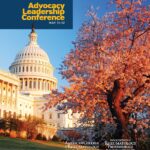PHILADELPHIA—A session on social media in rheumatology at ACR Convergence 2022 focused on how to use social media to promote one’s work and collaborate on international research projects, as well as the use of podcasts in educating rheumatologists.
Engaging with Social Media at Conferences
Jean Liew, MD, MS, assistant professor of medicine in the Section of Rheumatology at Boston University, discussed means of engaging with social media at conferences during the first half of the session.
The first step is to determine the conference hashtag being used on social media platforms, such as #ACR22 for ACR Convergence 2022. Dr. Liew explained how the use of hashtags on social media platforms enables content to be more easily searchable, so others can find your posts.
“Social media can be used to amplify sessions and speakers of interest as well as colleagues,” Dr. Liew said. Posts that cover the meeting, such as through tweetorials on Twitter summarizing talks of interest, enable others to virtually access meeting content.
Promoting your Work on Social Media & Rheumatology Education
Dr. Liew suggests creating social media accounts, such as on Twitter, for one’s research group or division. She showed examples of Twitter posts from rheumatology divisions at Boston University/Boston Medical Center and Brigham and Women’s Hospital, highlighting awards and abstracts that were being presented at ACR Convergence 2022.
“This is a way to highlight and amplify research publications and achievements of members of your research group and people in your division,” Dr. Liew said, and can be an effective way to promote research and divisions at national conferences.
Dr. Liew also reviewed other ways of creating educational content on social media, including examples of infographics and visual abstracts to provide education on rheumatology topics or promote research studies. Tweetorials are series of posts that can be used to cover a talk at a conference or provide an explanation of one’s own recently published research article.
She mentioned that the use of social media is not limited to intellectual discussions or educational content, describing the virtual #ACRDonutChallenge during ACR Convergence 2020, where Twitter was filled with posts of rheumatologists and rheumatology professionals enjoying donuts in their home cities, inspired by the previous in-person donut wall at the 2019 ACR annual meeting.
Research
The COVID-19 Global Rheumatology Alliance (GRA) is a novel grassroots organization that arose during the pandemic. Researchers, clinicians, patients and patient representatives collected evidence on the effects of the COVID-19 pandemic on patients with rheumatic disease.
Dr. Liew explained how the GRA arose early in the pandemic in March 2020, inspired by a series of tweets from Leonard H. Calabrese, DO, and Jinoos Yazdany, MD, MPH, asking about collecting data in patients with rheumatic diseases via an online registry. Dr. Liew explains that a registry was created within two weeks of those initial tweets, followed by the group’s publication of the first 100 cases one month after the first tweet.
“Even though all of this started on social media as a bunch of tweets, this is impactful work,” Dr. Liew said. “A lot of the results we found in those early first few months have held up over time, such as the signal for rituximab being associated with more severe outcomes [in COVID-19].”
Overview of Podcasts in Rheumatology
Michael Putman, MD, MS, an assistant professor of medicine at the Medical College of Wisconsin, Milwaukee, discussed staying up to date in rheumatology via podcasts. He is the creator of the popular podcast Evidence-Based Rheumatology.
“Over one-third of individuals globally have listened to podcasts in the last year,” Dr. Putman said, noting that over 50% of Americans have listened to a podcast in the past, with 41% listening to one in the past month.
Getting Started: Podcasts in Rheumatology: The first step to exploring podcasts is finding an application to access them, such as Overcast, and to search for podcasts in areas of interest.
“Look for podcasts you find engaging and informative, on topics you are excited and care about,” Dr. Putman said.
He suggests searching for new podcasts periodically and unsubscribing from podcasts that are not enjoyable. Additionally, building playlists allow the user to curate content into themes of interest, such as a rheumatology section or sports podcast playlist.
Dr. Putman then highlights some of his personal podcast favorites, including the following recommendations for rheumatology podcasts:
- ACR on Air
- Evidence-Based Rheumatology
- RheumMadness
- Lancet Rheumatology: In Conversation With …
- Join Our Journey: Vasculitis Visionaries Podcasts
- Arthritis Life .
Creating a Podcast
Dr. Putman discussed some of the challenges of creating a podcast, including costs, a commitment to generate content continually, and publicity. “For every minute of the podcast, one should multiply that time by 10 to estimate the required time to create it,” Dr. Putman said.
He recommended creators obtain a microphone for better audio quality, purchase editing software to edit audio clips and find a hosting service to hold the podcasts.
Dr. Putman also mentioned options for disseminating content on social media, such as a YouTube channel or TikTok for video content.
“TikTok has grown faster than any other social media platform,” Dr. Putman explained, reaching 1 billion users faster than any other social media application. TikTok is now the second social media app in terms of the total time spent by users per month, after YouTube.
Social Media & Future of Rheumatology
Dr. Liew encouraged the audience not on existing platforms to consider starting a social media account.
This presentation highlighted how the use of social media in rheumatology offers a unique platform for disseminating educational content, promoting research and collaborating with the scientific community.
 Mithu Maheswaranathan, MD, completed his fellowship in rheumatology at Duke University, Durham, N.C., where he is currently an attending rheumatologist in his first year on faculty.
Mithu Maheswaranathan, MD, completed his fellowship in rheumatology at Duke University, Durham, N.C., where he is currently an attending rheumatologist in his first year on faculty.




